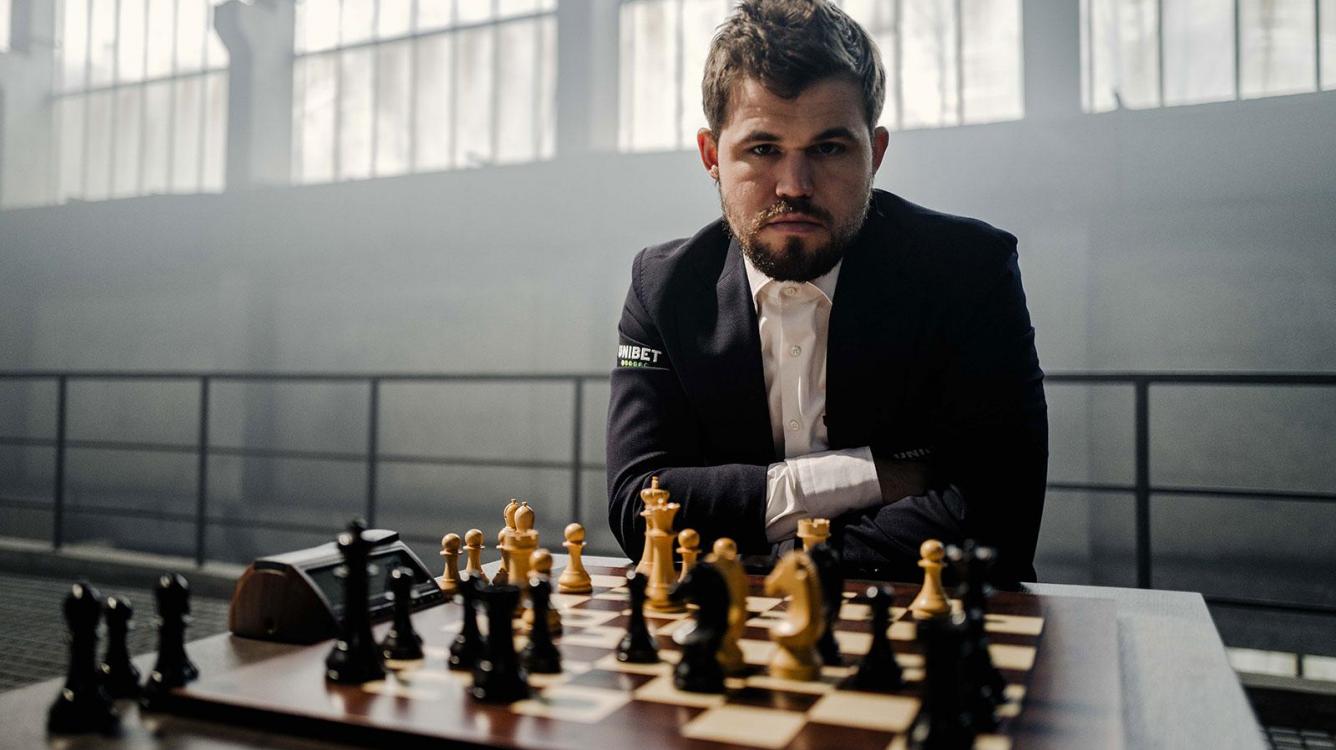
The Playing Style of Magnus Carlsen
Carlsen had an aggressive style of play as a youth, and, according to Simen Agdestein, his play was characterized by "a fearless readiness to offer material for activity". As he matured, Carlsen found that this risky playing style was not as well suited against the elite of the chess world. When he started playing in top tournaments, he had trouble getting much out of the opening. To progress, Carlsen's style became more universal, capable of handling all sorts of positions well. He opens with both 1.d4 and 1.e4, as well as 1.c4, and, on occasion, 1.Nf3, thus making it harder for opponents to prepare against him and reducing the effect of computer analysis. He said in 2015 that the middlegame is his favourite part of the game as it comes down to "pure chess". In a 2016 interview, Anish Giri said: "Magnus and I are very close in terms of style, but in our approach to the game we're total opposites. Magnus tries to put the accent only on play, getting away from preparation, but for me preparation plays an enormous role."
______________________________________________________________________________________________________
[Carlsen] has been known to say that he isn't all that interested in opening preparation; his main forte is the middlegame, in which he manages to outplay many of his opponents with positional means. ... Carlsen's repertoire is aimed at avoiding an early crisis in the game. He invariably aims for middlegames that lend themselves to a strategic approach.
Jan Timman, 2012
______________________________________________________________________________________________________
Garry Kasparov, who coached Carlsen from 2009 to 2010, said that Carlsen has a positional style similar to that of past world champions such as Anatoly Karpov, José Raúl Capablanca, and Vasily Smyslov, rather than the tactical style of Alexander Alekhine, Mikhail Tal, and Kasparov himself. In a 2013 interview, Peter Heine Nielsen said: "The days of big novelties are over, and that fits Magnus' style well." According to Carlsen, however, he does not have any preferences in playing style. Kasparov said in 2013 that "Carlsen is a combination of Karpov [and] Fischer. He gets his positions [and] then never lets go of that bulldog bite. Exhausting for opponents." Carlsen has also stated that he follows in the traditions of Karpov and Fischer, but additionally mentions Reuben Fine as a player who "was doing in chess similar to what I am doing".
Anand said of Carlsen in 2012: "Magnus has an incredible innate sense. ... The majority of ideas occur to him absolutely naturally. He's also very flexible, he knows all the structures and he can play almost any position." He also compared Carlsen to Boris Spassky in his prime, and stated that "Magnus can literally do almost everything." Kasparov expressed similar sentiments: "[Carlsen] has the ability to correctly evaluate any position, which only Karpov could boast of before him." When asked in a 2016 interview whether Carlsen's style resembles his own, Karpov answered: "It is quite possible. He grew up when I was in power, and perhaps he studied my games. He can convert a minimal advantage into a real one."
In a 2012 interview, Vladimir Kramnik stated that Carlsen's "excellent physical shape" was a contributing factor to his success against other top players as it prevents "psychological lapses", which enables him to maintain a high standard of play over long games and at the end of tournaments, when the energy levels of others have dropped. Levon Aronian said in 2015: "Magnus' main secret is his composure and the absence of any soul-searching after mistakes during a game." Tyler Cowen gave a point of view on Carlsen's playing style: "Carlsen is demonstrating one of his most feared qualities, namely his 'nettlesomeness,' to use a term coined for this purpose by Ken Regan, of the University at Buffalo. Using computer analysis, you can measure which players do the most to cause their opponents to make mistakes. Carlsen has the highest nettlesomeness score by this metric, because his creative moves pressure the other player and open up a lot of room for mistakes. In contrast, a player such as Kramnik plays a high percentage of very accurate moves, and of course he is very strong, but those moves are in some way calmer and they are less likely to induce mistakes in response."
Carlsen's endgame prowess has been described as among the greatest in history. Jon Speelman, analysing several of Carlsen's endgames from the 2012 London Classic (in particular, his wins against McShane, Aronian, and Adams), described what he calls the "Carlsen effect":
... through the combined force of his skill and no less important his reputation, he drives his opponents into errors. ... He plays on for ever, calmly, methodically and, perhaps most importantly of all, without fear: calculating superbly, with very few outright mistakes and a good proportion of the "very best" moves. This makes him a monster and makes many opponents wilt.
An artificial intelligence approach, designed by Jean-Marc Alliot of the Institut de recherche en informatique de Toulouse ("Toulouse Computer Science Research Institute"), which compares chess grandmaster moves against that of Stockfish—a chess engine that outperforms all human opponents—rated Carlsen as the best player of all time as he had the highest probability among all World Chess Champions to play the moves which Stockfish suggested.
Carlsen also plays speed chess online under many screen names. He is known for meme openings and exceptionally strong play, despite banter and gags.